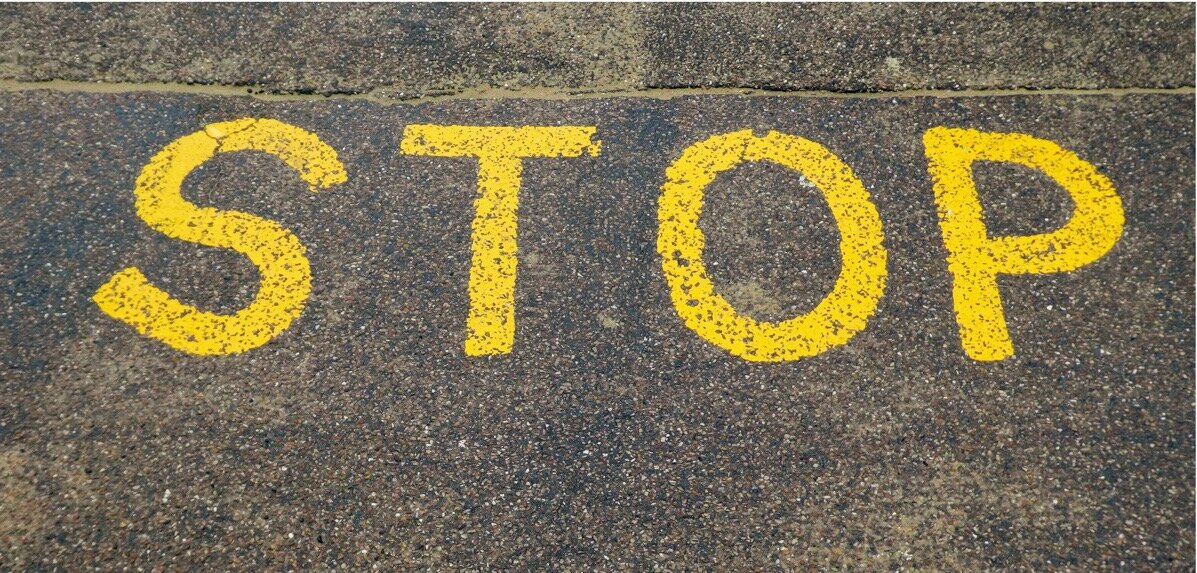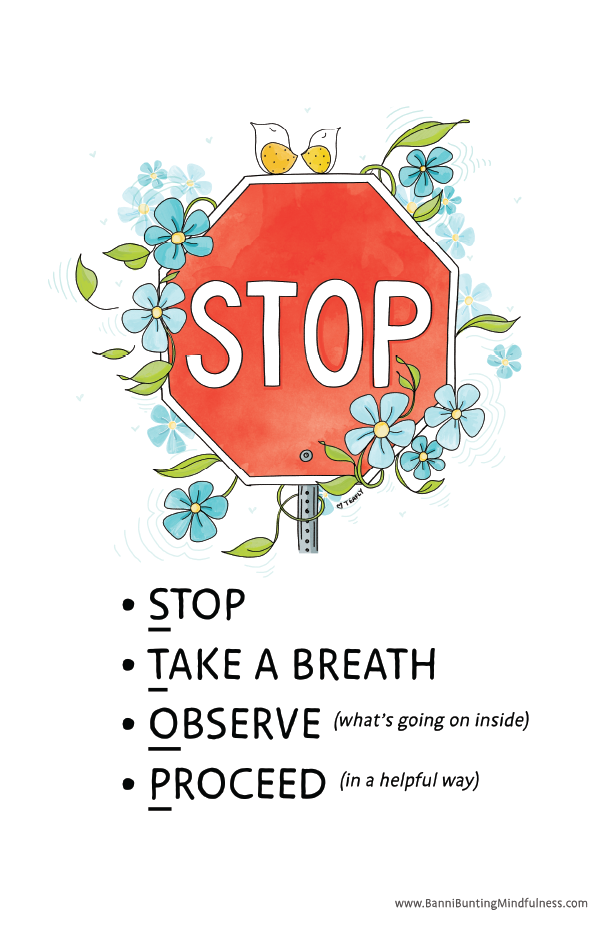Lesson 9 The Practice: STOP
“Successful people have fears, doubts, and worries. They just don’t let these feelings stop them.”
Sometimes, mindfulness can feel abstract. Having a step-by-step process can make it more accessible and actionable. Today’s practice introduces just that—a simple yet powerful tool called STOP to help you cultivate presence and reset in any moment, both on and off the court.
On-Court Tip
Today’s STOP practice offers two key applications:
As an acronym to ground yourself.
As a way to manage negative self-talk.
STOP as an Acronym
S – STOP:
Pause. Let go of the habit of doing and allow yourself to be still. Feel your feet on the ground, anchoring yourself in the present moment.
T – TAKE A BREATH:
Take a few deep, cleansing breaths. Feel the air entering and exiting your body. This helps reset your nervous system and gain perspective.
O – OBSERVE:
Notice what’s happening right now. Tune into your body’s sensations and emotions while shifting away from mental chatter or the stories around what is happening. Try naming what you observe—“name it to tame it”—to help process what you’re experiencing; e.g. “This is self doubt.” “This is frustration.” “This is hard.” … AND you can handle it
P – PROCEED:
Move forward with skill. If you’re still feeling unsettled, take another deep breath or pause until you feel more grounded. Proceed in a mindset that is skillful, making decisions from a balanced and centered place.
“Watch your actions, they become your habits. Watch your habits, they become your character.”
Using STOP to Manage Negative Self-Talk
The second application of STOP is to break free from negative self-talk and unhelpful thought patterns:
When you notice the inner critic, self-doubt, or negative stories arising, firmly say “STOP” to yourself internally. This interrupts the cycle and creates space for a more constructive mindset.
Remember: You don’t have to believe everything you think. Thoughts are real, but they’re not always true.
Investigate your thoughts with curiosity:
Does this thought serve me?
Can I let go of this narrative and return to the present moment? Or better yet, replace it with some positive and constructive?
When you take time to STOP, you shift from a reactive state to one of presence and possibility. Over time, these small pauses build resilience and help you stay grounded. Remember: practice makes permanent.
“Mindfulness helps us step back, observe those self-defeating thoughts without judgment, and abandon them. But when we are not in the present moment and we’re listening to that self-critic, here’s what can happen: We can get so keyed up that our energy is channeled through a narrow, tense spectrum. We rarely get into flow that way. On the contrary, we get in our own way.”
STOP 2.0
Similar to STOP but taking the practice up to the next level is another transformative practice of RAIN:
R – Recognize
Acknowledge what’s happening in the moment—your thoughts, feelings, and behaviors. Naming the experience is a significant step. Like waking from a dream, recognition is the first step toward clarity.
A – Allow
Let the experience be just as it is. Instead of judging, avoiding, or resisting, pause and allow the feelings or sensations to be present. Think of The Beatles’ song “Let It Be”—letting go of resistance can ease suffering. (PAIN x RESISTANCE= SUFFERING)
I – Investigate
Bring gentle curiosity to your experience. Ask yourself:
What most needs my attention right now?
How am I feeling this in my body?
What am I believing? Is it true? It’s probably not true…
What does this feeling need from me?
N – Nurture
Respond with benevolence, bringing kindness, compassion, and understanding to your experience. Meet the moment with the heart qualities that will help you move through it with grace. As Dorothy Hunt says, we need a “heart space where everything that is, is welcomed.”
RAIN is like a muscle: the more you use it, the stronger and more accessible it becomes. How do we get better at something? Practice!
“Acceptance is seeing clearly what’s happening and holding it with kindness. This is a radical antidote to the suffering of judging mind.”
Final Reflection
There is power in a pause. Whether you use STOP or RAIN, these practices help you respond skillfully to challenges on and off the court. They create space for growth, resilience, and presence—qualities that will elevate not just your game, but your life.
“It’s seeing clearly that liberates us.”
“Mindfulness is simply being aware of what is happening right now without wishing it were different. Enjoying the pleasant without holding on when it changes (which it will). Being with the unpleasant without fearing it will always be this way (which it won’t). ”
STOP, BREATHE, BE
Another Twist on the Practice by Dr. Aditi Nerurkar Harvard physician specializing in stress and burnout
“Stop, breathe, Be is a three second brain reset to help manage anxiety in moments. The instructions are in the name: stop whatever you're doing, take a brief pause. Take a deep breath in and out. Be grounded in the present moment. Stop, breathe, Be gets you out of “what if?” thinking and back to what is, in the here and now.”
“When your thoughts are racing and repetitive, remember: no one can harm you as much as your untamed mind. When you are struggling or in pain remember: no one can help you as much as a quiet, clear, composed mind.”



